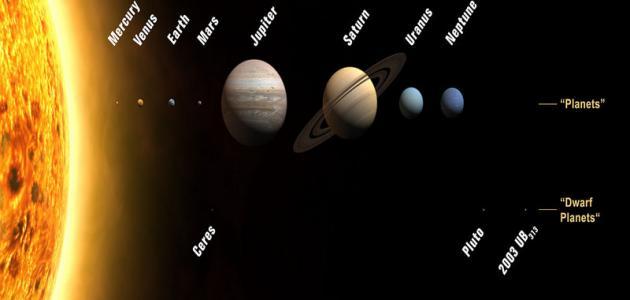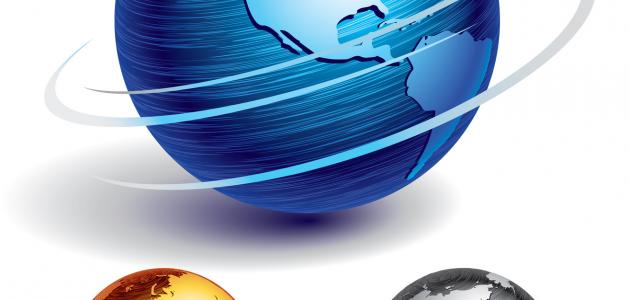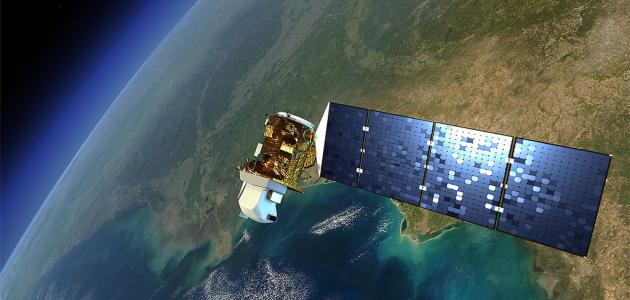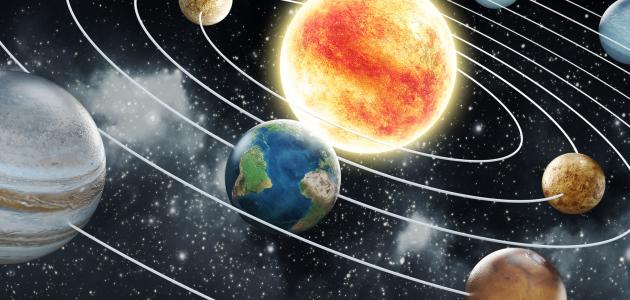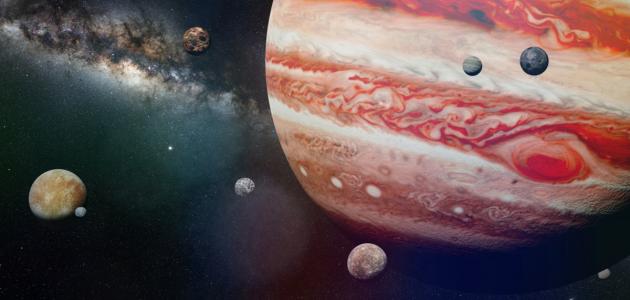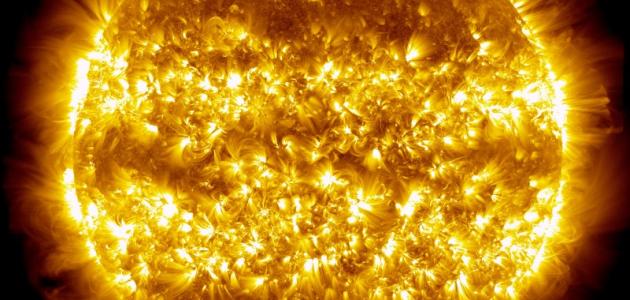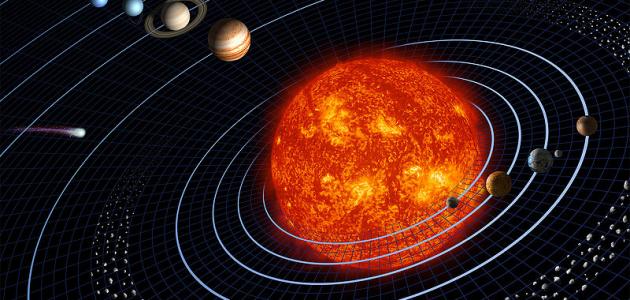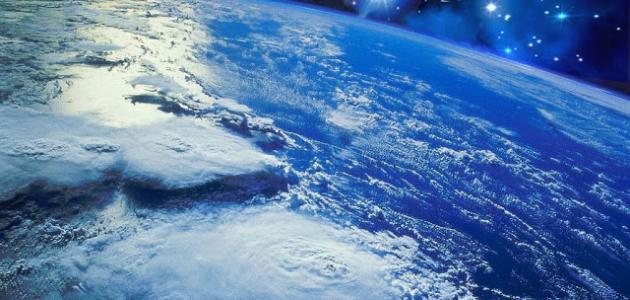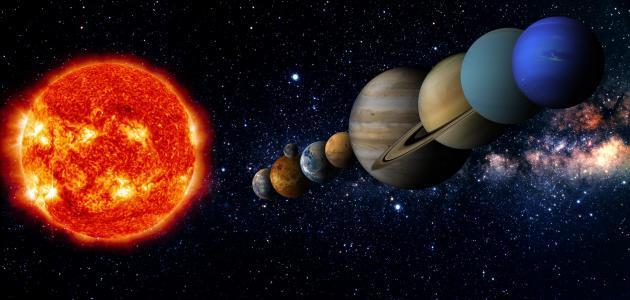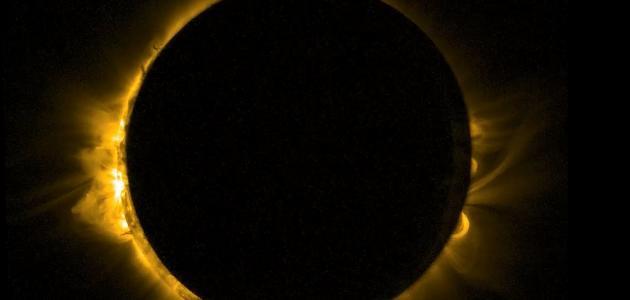moons of Saturn
The number of moons of Saturn * is 82 moons, as it was confirmed that only 53 of them exist and named, while the rest have not been confirmed for their existence yet, so their sizes range from moons that are larger than the size of the planet Mercury, such as the moon Titan, and small moons that are almost the size of a sports arena It is worth noting that most of Saturn's moons are much smaller in size than Earth's moon, and yet some moons contribute to preserving the interdependence of Saturn's rings together, through the moon's gravity that prevents the materials that make up the rings, such as icy stones and dust, from Separation from the rings or floating away from them, as they work to collect them and prevent them from spreading, and these moons are called “shepherd’s moons”; Because its work is similar to that of the shepherd in preventing the sheep from separating from the rest of the herd, and here are the most prominent moons of Saturn:
Moon Titan
The moon Titan was discovered in 1655 AD in the region after the Frost Line* (in English: Frost Line), where the temperatures of the solar nebula are cold as it should be in order for each of the hydrogen compounds, such as ammonia, methane, and water to condense and turn into Glaciers and ice granules from which the moon was formed, so that some glaciers and ice granules ascend to form its atmosphere, and it is worth noting that the exposure of the ammonia compound to ultraviolet solar radiation for millions of years has led to the dissolution of the compound’s bonds, resulting in both nitrogen and hydrogen gases, and heavy nitrogen molecules accumulated In the atmosphere, while hydrogen gas was emitted from the atmosphere as a result of its light mass or the light mass of oxygen.
Read also:What is the mass of the earthTitan is distinguished by its very dense atmosphere, which is composed more of nitrogen gas, as the percentage of nitrogen in it is 90%, and the rest is a mixture of argon, methane, ethane, and other hydrogen compounds, as these components are the main reason behind its appearance in color The moon's surface temperature is higher than it should be compared to its distance from the sun, and the reason behind this is the presence of the greenhouse phenomenon, as scientists think that the environmental situation of Titan's moon is currently similar to the environmental situation of the planet Earth before the formation of life, while some other information comes About Qamartitan:
- The average diameter of Titan is about 5150 km.
- The moon is about 1,221,830 km from Saturn.
- The moon needs approximately 15.95 Earth days* to complete its orbit around Saturn.
Mimas moon
Scientists monitored the Mimas moon (in English: Mimas) in 1789 AD, as the Mimas moon is the smallest astronomical body among the moons of Saturn, and the closest to it orbitally (orbits), and consists mainly of water ice, and despite that it is not affected by the phenomenon of tidal heating * or Tidal heating (in English: Tidal Heating) also affected other, more distant moons, where no melting of ice was observed on its surface or any other changes occurred, the reason behind this may be due to the presence of a liquid ocean below its surface, and what should be noted is that the Mimas moon It is considered responsible for the formation of the gap between the two rings of Saturn, which was called the Cassini Division. The moon Mimas also contains a huge crater on one of its sides resulting from collisions that almost divided it into two halves. Some other information about the moon follows:
Read also:How was the solar system formed?- The average diameter of Mimas is about 392 km.
- The moon is about 185,520 km from Saturn.
- It orbits Saturn once every 0.9 Earth days.
Moon Dion
Dione, or Saturn's fourth moon (in English: Dione), which was discovered in 1684 AD, consists of a dense rocky core surrounded by water ice, and an atmosphere of low density consisting of oxygen, and there is a possibility of a liquid ocean below its surface, as scientists noted that the presence of craters and slopes on A surface from the back and not on the front surface facing the planet Saturn during its rotation, as the moon is characterized by the phenomenon of tidal locking or orbital locking (in English: Tidal Locking), and astronomers believe that the collisions that occurred to the moon could have made it revolve around its axis, and as follows some information Other about the moon:
- Dione has an average diameter of about 1120 km.
- The moon is about 377,400 km away from Saturn.
- It orbits Saturn about once every 2.74 Earth days.
Moon Enceladus
Enceladus, which was discovered in 1789 AD, is distinguished as one of the brightest bodies in the solar system because of its icy surface. It also contains more than 100 hot water springs at its south pole, as a result of the tidal heating phenomenon that melts some of its icy parts. In addition to allowing the icy material to flow into space through lines called "Tiger Stripes" - its surface is striped -, these small icy fragments or ice grains gather together in turn to create Saturn's ring "E", and it should be mentioned that there is a possibility of existence Life in the ocean below the surface of Enceladus, and here comes some other information about the moon:
Read also:What are the stars- Enceladus has an average diameter of about 498 km.
- The moon is about 2382 * 10 from Saturn2 kilometer.
- It orbits Saturn about once every 1.37 Earth days.
Moon Iapetus
The moon Iapetus (in English: Iapetus) is distinguished by its nut-like shape; Because of the bulging of its center outward, and its equator, along which mountainous protrusions extend, it is also distinguished by the uneven colors of its surface, as it contains dark-colored sides, and other luminous ones that make it look like a yin-yang symbol, due to the precipitation of dark-colored hydrocarbons on its surface for a long time, which led to its gradual spread, in addition to its absorption of heat more, it is likely that the source of these hydrochrons dates back to the nearby moon Phoebe, and some of its mountains - which may have been formed from the materials of another moon - are among the highest mountains in the system In addition, scientists study the icy movements that occur on the moon, such as landslides, in order to compare them with similar phenomena on the planet Earth.[XNUMX] Here is some other information about the moon:
- Iapetus was discovered in 1671 AD.
- Iapetus has an average diameter of 1460 km.
- The moon is about 3,561,300 km away from Saturn.
- It orbits Saturn about once every 79.33 Earth days.
Raya's moon
The Rhea moon (in English: Rhea) is the second largest of the main moons of Saturn, although its size does not exceed half the size of the Earth's moon, and the moon lacks a core in its center, as it consists entirely of ice mixed with a small amount of rocks, and its surface is filled with large craters, As for its atmosphere, it consists of oxygen, and it is considered low-density, as its density is less than the density of the Earth’s atmosphere by about 5 trillion times. carbon dioxide from its icy surface,[XNUMX] Here is some other information about the moon:
- Raya was discovered in 1672 AD.
- The average diameter of the Moon is about 1530 km.
- The moon is about 527,040 km from Saturn.
- It orbits Saturn about once every 4.52 Earth days.
Moon Hyperion
The Hyperion moon was discovered in 1848 AD, and it is one of the largest moons of Saturn, irregular and non-spherical in shape, with an average radius of about 135 km. Its shape was described in terms of diameter using three axes, namely: 410 * 260 * 220 How much, scientists have explained the strange shape of the Hyperion moon by putting the possibility that it resulted from the remnants of a moon that was shattered due to a violent collision.[XNUMX] The distance between the moon Hyperion and the planet Saturn is about one million four hundred and eighty-one thousand and one hundred kilometers, while it needs about 21.26 Earth days to complete its orbit around it.
The density of the Hyperion moon is slightly more than half the density of water, because it consists of water ice, whose porosity reaches more than 40%, in addition to other less dense materials, such as methane ice and carbon dioxide, and this means that the Hyperion moon is nothing but a large pile of accumulations that They were formed from glaciers and small boulders without the presence of sufficient gravity to compress these accumulations together.
Thes moon
The astronomer Giovanni Domenico Cassini discovered the third moon of Teys or Saturn (in English: Teyths) in 1684 AD, and it was named after the god Titan in Greek mythology. It is made of pure water ice, and therefore its density is equal to that of water, i.e. 1.0 g/cm3, and its diameter reaches 1066 km.
The Tethys moon revolves around Saturn once every 1.9 Earth days through a circular orbit that is two hundred and ninety-four thousand six hundred and sixty kilometers away from Saturn, meaning that it is located within the borders of Saturn's faint ring known as "E", and it is worth noting that the movement of the Tethys moon is restricted In an orbital resonance * (in English: orbital resonance) with the movement of the moon closest to it, Mimas, and therefore, when Tethys has completed its cycle around Saturn, Mimas has completed two cycles, and it has been observed that Tethys always faces Saturn with the same face, while its other face faces the moon Mimas.
- Saturn: one of the planets of the solar system, and its sixth rank near the sun, preceded by Jupiter, followed by Uranus, ten moons revolve around it, and three rings of small bodies.
- Frost line: the distance separating the sun from other planets, as the solar radiation becomes very faint, so that the ice on other planets does not turn into steam.
- Ground day: The amount of time it takes for the planet to fully rotate and make one complete revolution around its axis or itself, which is equivalent to 23 hours and 56 minutes.
- Tidal heating or tidal heating: the generation of heat due to friction resulting from the strong tidal forces exerted by a very massive body on a body moving around it in an elliptical orbit.
- Orbital resonance: the occurrence of a mutual periodic gravitational effect when two bodies or two bodies rotate on each other, which contributes to determining the dynamic structure of the solar system, and to maintaining their stability and not colliding with other particles after their occurrence. .
